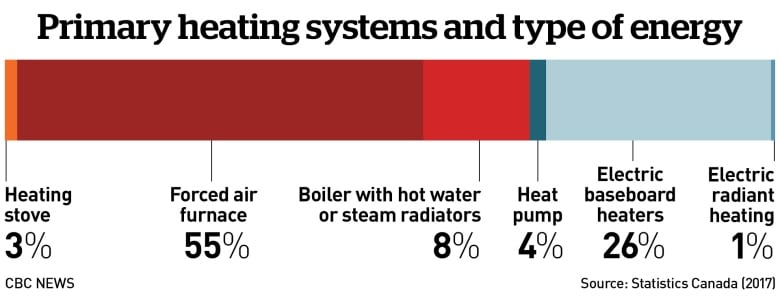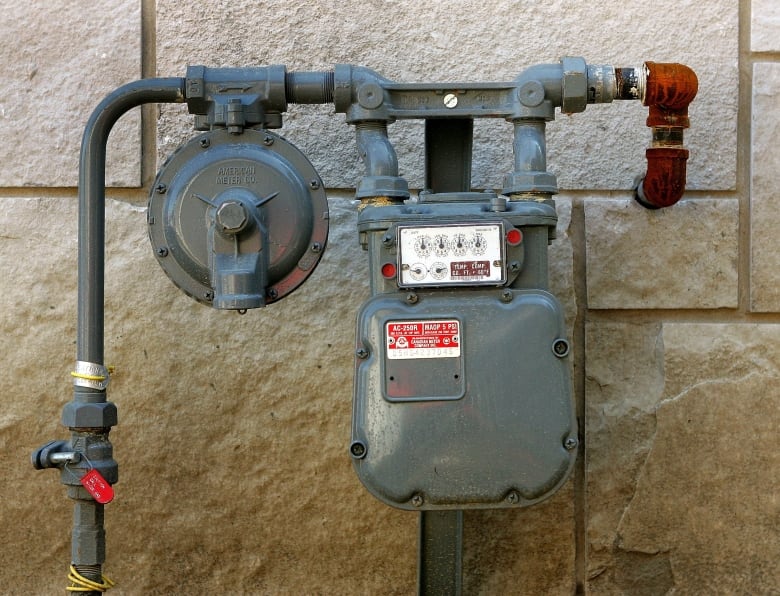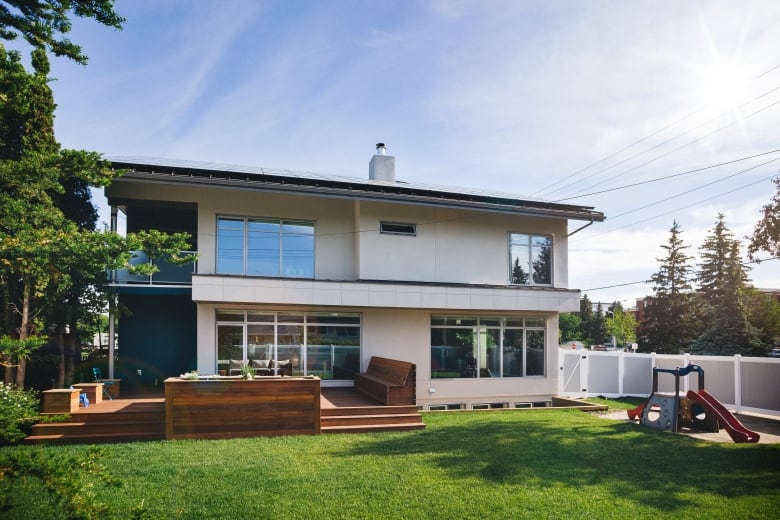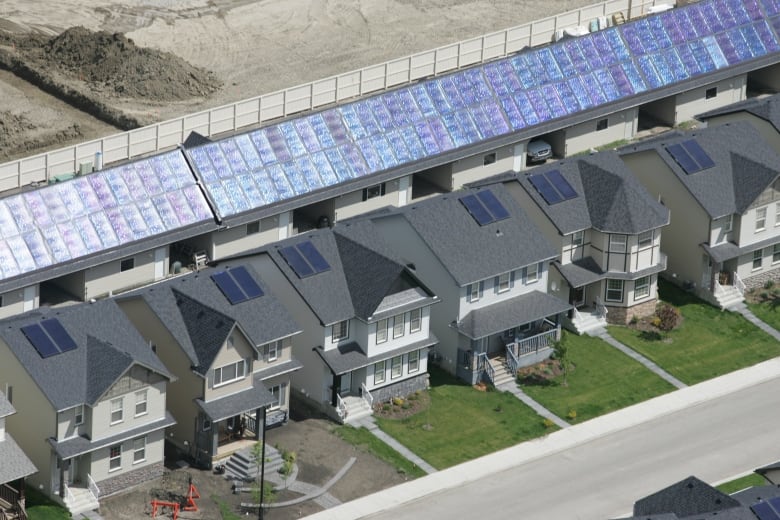Goodbye, gas furnaces? Why electrification is the future of home heating
From electric baseboards to heat pumps, heres a closer look at the options

It's a stereotype, but it's true Canada's winters are cold. And many of us stay toasty by burning fossil fuels such as natural gas in our furnaces or the boilers that feed our radiators.
In an effort to cut down on greenhouse gas emissions and meet targets to reduce global warming, the U.K. has proposed banning fossil fuel-based heating in new homes by 2025. Cities in the states of California, Washington and Massachusetts are also trying to phase out natural gas.
If your home is hooked up to adistrict heating system, where a utility supplies heat directly, you may be able to tap into a variety of greener energy sources.
But if your home relies on its own individual heating system, as most do, what are the alternatives to fossil fuels and will they work in the colder parts of this country?
Here's a closer look.
How much does heating buildings contribute toCO2 emissions?
Emissions from heating and electricity are typically combined in statistics about emissions. Because of that, we weren't able to find an exact breakdown of the proportion from heating alone. But here's what we know.
About 45 per cent of Canada's emissions come from burning fossil fuels to make energy, including heat and electricity quite a bit more than transportation (28 per cent), the Prairie Climate Centre reports. Of that, about half is from houses, shops, schools and other private and public buildings. The other half is from industry.
Nearly 70 per cent of the energy used in the residential sector comes from fossil fuels, a 2014 study estimated. Forced air furnaces and hot water or steam boilers with radiators, which most often burn fossil fuels such as natural gas, make up a majority of the primary heating systems in Canada, Statistics Canada reports.

How important is it to decarbonize heating?
"Very important," saidFin MacDonald, program manager of the Zero Carbon Building program at the Canada Green Building Council, a non-profit that advocates for and certifies green buildings. In provinces such as B.C., Ontario and Quebec whose power grids don't produce a lot of emissions, fossil fuel combustion from buildings represents the biggest source of carbon dioxide, he said.
That's certainly the case in Vancouver, where more than half the greenhouse gas emissions come from buildings, said Brady Faught, green buildings engineer with the city.
While people may be concerned about a car idling for 10 minutes, Faught says "your house is basically idling all day."
And it's not just the gas it's burning that's the problem. Natural gas or methane a greenhouse gas that traps heat far more effectively thancarbon dioxide, causing much more global warming per molecule also leaks from the entire distribution system used todeliver gas to people's homes and furnaces, Faught said.

How can emissions from home heating be reduced or eliminated?
Buildings heated with fossil fuels can cut some of their emissions by reducing the need for heating through things like better insulation and reusing "waste" heat.
But in order to make a big difference, the green building industry is looking to electrify heating.
"The only fuel that we can truly make 100 per cent carbon neutral is electricity," MacDonald said.
That's why the City of Vancouver is trying to come up with regulations and incentives for homeowners to electrify their home heating.
"The ultimate goal is zero emissions," said Faught, whose job is todevelop policies to encourage green retrofits for single-family homes in Vancouver.
In provinces with anelectrical grid based mostly on hydro, nuclear or other non-fossil fuel energy sources, such as Ontario, Quebec and B.C., replacing a gas-burning furnace with an electrical heating system can nearly eliminate a home'semissions.
In some provinces, such as Alberta and Saskatchewan, power is largely generated by burning fossil fuels. For now, homeowners who want to cut heating emissions need to go beyond electrification and also install green power generation, such as solar panels.
What are some of the options for heating your home electrically?
-
Baseboard heaters are the most common option in use across Canada. They're powered by electrical resistance heating, just like your toaster and oven. Electric forced air furnaces, electric convection heatersand electric radiant floors also use electrical resistance heating.
-
Heat pumps are far more efficient, because they simply move heat into your home, rather than generating heat. There are two kinds:
-
Air source heat pumps, which draw heat from the air. (Yes, it can work even when it is very cold outside, just as your freezer can use its heat pump to cool itselfto -18 C in a 20C kitchen.)
-
Ground source heat pumps, which draw heat from the ground and are sometimes referred to as geoexchange or geothermal heat pumps. However, MacDonald says the industry is trying to move away from calling it geothermal, as it gets confused with geothermal power generation.
-
What are the pros and cons of baseboard heaters and other electrical resistance heaters?
Baseboard heaters are popular because they're very cheap and easy to install.
However, those and other kinds of electrical resistance heaters are very inefficient.
"They're like just having a toaster running in your house all day resulting in high electric bills," saidFaught.
For those reasons, baseboard heaters are often popular in rental units where landlords install them and tenants pay the cost of electricity.

That said, it's possible to bring the cost down in a small home by making the building more airtight and better insulated.
David Turnbull, a former homebuilder and current manager of Enerspec Energy Consulting, said his company built a townhome complex in Edmonton where units were relatively small and so well-insulated that "you could almost heat the house with two hair dryers." In that case, baseboard heating made financial sense.
When does installing a heat pump make sense?
Heat pumps are way more efficient than electrical resistance heating. Both MacDonald and Faught say it's possible to get 300 per cent efficiency from a heat pump that is, you can get three kilowatts of heat for every kilowatt of electricity you put in. They're especially efficient in spring and fall.
However, MacDonald says heat pumps tend to produce a lower temperature heat than burning fossil fuels, and therefore don't heat a building as quickly.
That means a building needs to be airtight and well insulated to keep the heat from escaping and reduce the "heating load" before you shouldconsider this as an option and even more so the further north you go.

Faught says air source heat pumps can heat an airtight, well-insulated home to a comfortable temperature until it gets to about -10 C outside. Inplaces with colder winters than that, supplementing with baseboard heaters may be necessary with conventional air source heat pumps. However,some manufacturers have brought cold climate heat pumps onthe market that they say can deal with outside temperatures down to -25 C or -30 C.
One big advantage of heat pumps is that they don't just heat homes, theycan also cool them.
In fact, air conditioners are technically heat pumps. The difference with the heat pumps capable of heating homes is they can run in reverse.
What'sthe difference between air source and ground source heat pumps?
Air source heat pumps are cheaper and easier to install, but less efficient and more expensive to run. That's because the ground temperature tends to remain stable all year round containing more heat in the winter and more "coolness" in the summer than the air.
However, ground source heat pumps tend to be a lot more expensive and require more space to install because it's necessary to digdeep to access stable underground temperatures.

That can be particularly costlyin places where the ground is bedrock, said Turnbull. It's more economical if you're building on clay or sand, he said, and especially if you're digging anyway for a parkade, for example.
What about solar?
Solar power is useful for generating green energy to run devices like heat pumps in provinces withafossil fuel-based electricity grid.
However, there's also solar thermal energy, where heat is collected directly rather than by generating electricity.

MacDonald said that tends to be more expensive than other options and requires lots of space for the solar panels. Because most of the heat is collected in summer, it also needs to be stored somewhere.
"If you have a pool, perfect," he said. If you have a ground source heat pump, in theory you can also store the heat in its underground heat exchange loop.
Turnbull and Faught both think solar technology is not quite ready for heating individual homes in Canada (although solar thermal heating with storage has been successfully tested for district heating in Okotoks, Alta.).
What are governments doing about this?
In Canada, the federal government is holdingpublic consultations on proposedchanges to theNational Building Code and its National Energy Code for Buildings. Some jurisdictions such as Vancouver are also coming up with their own regulations and incentives to encourage electrification, especially in new homes.
The city's climate emergency response report proposes that by 2025,all new and replacement heating and hot water systems shouldbe zero emissions.
"Having a fully electric house without a gas line is the direction we want to go," Faught said.
Turnbull says governments need to plan to phase out fossil fuels in home heating.
"It's an inevitability that we are going to get off them."
Clarifications
- This story has been updated to clarify the response to the question, "How much does heating buildings contribute to CO2 emissions?" and the fact that emissions from heating and electricity are typically combined in statistics about emissions. Because of that, we weren't able to find an exact breakdown of the proportion from heating alone.Feb 04, 2020 1:54 PM ET













_(720p).jpg)


 OFFICIAL HD MUSIC VIDEO.jpg)
.jpg)



























































































